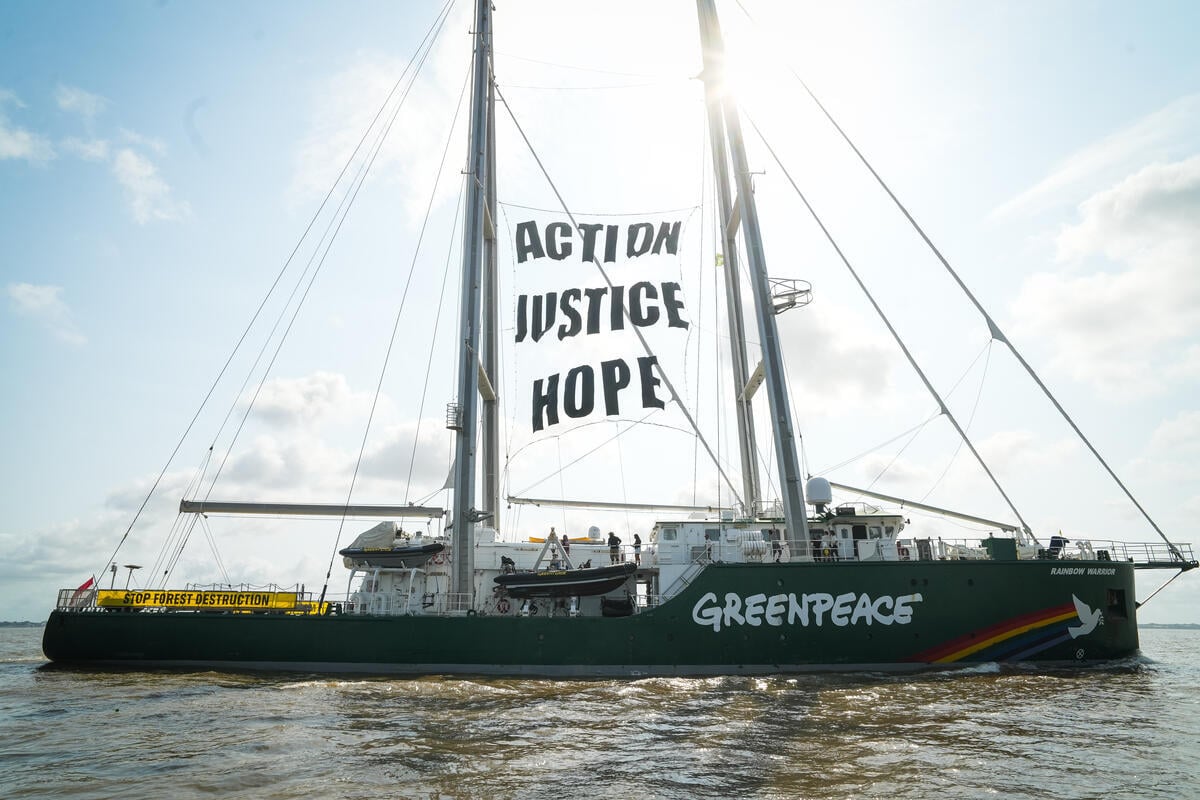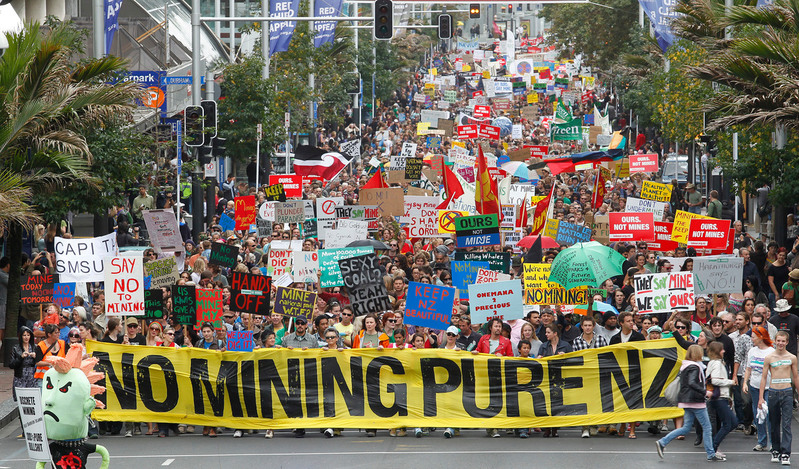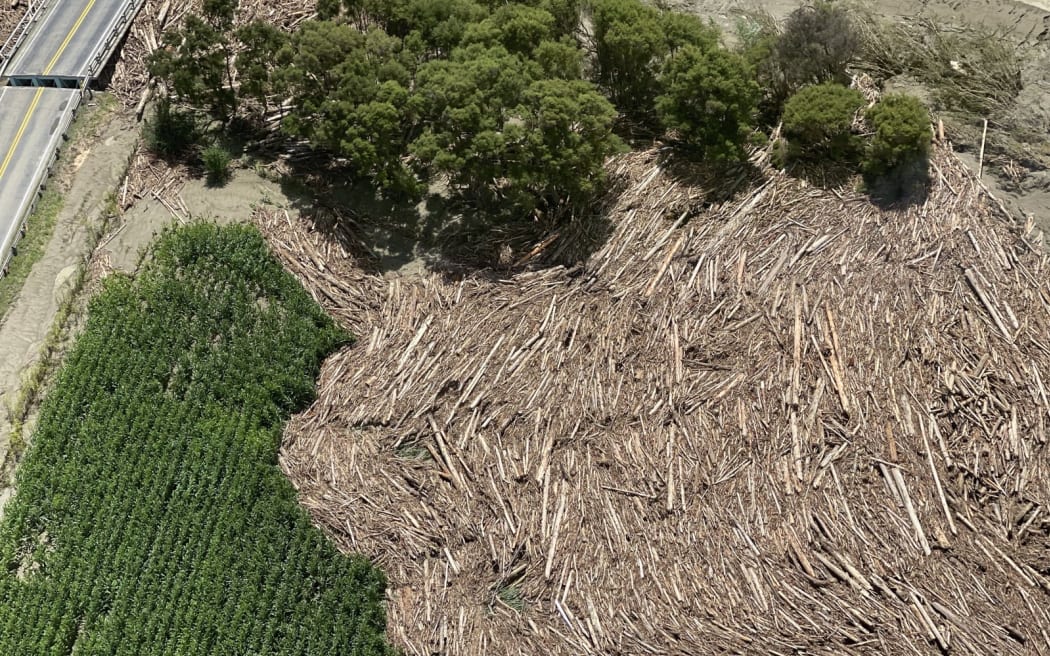- Introduction
- Mining and Quarrying – Part 2.5
- Stock Exclusion – Part 2.6
- Commercial Forestry – Part 2.2
- Annex 1 – About Greenpeace Aotearoa
Introduction
The following submission outlines Greenpeace’s concerns and recommendations regarding the proposal in the primary sector discussion document (the discussion document).
Mining and Quarrying – Part 2.5
Mining is widely recognised as one of the world’s most environmentally destructive industries.
The Regulatory Impact Statement for the proposals makes clear that their purpose is “making the consent pathways more enabling” for mining and quarrying activities. This is achieved in the policy proposal by weakening the “gateway tests” for Aotearoa, New Zealand’s most ecologically sensitive land; wetlands, significant natural areas and highly productive land.
These gateway tests are the first and most basic line of defence against destructive mining projects in or around these ecologically sensitive areas. A corporation must pass the gateway test before they can apply for a consent to mine or quarry.
These proposals weaken the safeguards that stand between extractive industries and our most vulnerable natural areas. This is nothing short of environmental vandalism.
And we are deeply concerned to see that these proposals were written with, and on behalf of multinational mining companies. Māori were not consulted nor were environmental groups. The Government has not even tried to hide this deeply anti-democratic behavior. The RIS states:
“There has been limited stakeholder consultation with industry representatives AQA and Straterra to develop our understanding of the problem definition prior to public consultation. … Due to the limited time available, it has not been possible to engage with Māori groups on these proposals. A treaty impact analysis has been completed but it was not possible to fully assess the Treaty impacts, including on the Crown’s Treaty settlement commitments.”
Officials even wrote that there is limited evidence of a policy problem and that they “developed our understanding of the problem definition through engagement with industry.”
It is therefore not surprising that the proposals even include a plan to remove the requirement that mining projects must provide a public benefit.
This means that multinational mining corporations can wreak environmental havoc in our most sensitive ecosystems and send the profits straight to their offshore shareholders, without proving there will be a single benefit to everyday New Zealanders.
This is not policymaking in the public interest – it’s corporate pillage.
It’s a deliberate dismantling of the environmental protections so that more mining projects can go ahead, and this will have inevitable and irreversible consequences for native wildlife, freshwater, natural ecosystems, and, in the case of coal, the climate.
We strongly reject the policy objective of these changes, which is outlined in the RIS, as follows: “The primary policy objective is to better enable resource extraction and use, including quarrying and mining, while providing for any associated adverse effects to be considered and mitigated.”
We recommend the policy objective should instead read: “The primary policy objective is to better protect indigenous species, water quality, ecosystems and the climate from extractive industries such as mining and quarrying.”
Greenpeace Recommendations on Part 2.5
We oppose all changes set out in Part 2.5 of the discussion document and we specifically strongly oppose the following proposed changes:
- including ‘operational need’ in the NPS-FM gateway test;
- removing ‘could not otherwise be achieved using resources in New Zealand’ from NPSIB and NPS-HPL;
- removing the requirement for the benefit to be public in the NPSIB and the NPS-HPL (i.e. allowing any benefits to be considered); and
- adding consideration of regional benefits to the mining consent pathway in the NPSIB and NPS-HPL
In all cases we recommend at a minimum, retaining the status quo but going further and strengthening environmental protections not weakening them.
In order to better protect indigenous species, water quality, ecosystems, and the climate from mining and quarrying we recommend the following further changes that were not proposed in the document:
- All mining and quarrying on conservation land, including stewardship land, is made a prohibited activity
- All coal mining nationwide is made a prohibited activity. Coal is the world’s dirtiest fossil fuel and one of the most expensive forms of electricity production. It is time to end coal extraction for good.
- Impose much greater environmental restrictions and tougher consent pathways than the status quo for all mining or quarrying in or near wetlands, SNAs and productive land – across national policy instruments.
Stock Exclusion – Part 2.6
Fencing cattle out of waterways, including wetlands, is the bare minimum that should be required of the livestock industry to protect water quality, public health and their own international brand that relies on the ‘clean green’ image.
The proposal outlined in part 2.6 is to repeal the requirement that on extensive beef and deer farms livestock is fenced out of wetlands that support threatened species.
This is a regressive and damaging policy proposal that would benefit a small segment of the farming sector, while placing further pressure on ecologically sensitive habitats and indigenous species found nowhere else in the world.
New Zealanders expect a baseline of environmental responsibility from all industries – especially those profiting from public natural resources. Weakening stock exclusion is a step backward that this country cannot afford.
This proposal follows an earlier rollback in 2024, when the Government weakened rules on stock exclusion and intensive winter grazing (commonly referred to as “mud farming”). That decision was unacceptable – and these proposed changes are equally indefensible.
Allowing livestock into wetlands causes direct and well-documented environmental harm. Livestock waste carries disease-causing pathogens along with nutrients, promotes algal growth, and further degrades waterways already under severe stress from diffuse pollution. Livestock access to waterways erodes banks and damages vegetation, harms fish spawning grounds, compromises recreational use and undermines mahinga kai
The only justification given in the discussion document for this proposal is that the Government alleges “the benefits of the rules do not outweigh the costs to the primary sector.”
We strongly reject this narrow and inadequate cost-benefit analysis.
The environmental, cultural, and public health costs of weakening these rules are profound. Wetlands, clean and safe water, healthy ecosystems, and indigenous biodiversity are not optional extras – they are priceless, irreplaceable, and essential to our collective future. Their value cannot and should not be traded off for the short-term profits of the private sector.
We therefore strongly oppose the proposed amendments to stock exclusion rules. We recommend retaining the current rules at a minimum. We further recommend that stock exclusion rules are strengthened, including by reinstating those that were weakened in 2024.
Commercial Forestry – Part 2.2
The Government is proposing to repeal regulation 6(4A) which enables councils’ broad discretion to apply more stringent rules to the forestry sector to control aspects of afforestation.
It is also proposing to amend regulation 6(1)(a) to make it harder for councils to impose stricter rules on forestry more broadly, than are outlined in the NES-CF.
These proposals weaken regulations that currently allow councils to set more stringent forestry rules than are set nationally and the spurious argument the Government makes for doing this is that it is leading to “costs and uncertainties on the forestry sector.”
There is no uncertainty about the enormous environmental, social, and economic costs already being borne by communities due to weak forestry regulations. In regions like Tairāwhiti and Hawke’s Bay, forestry slash and sediment have caused devastating harm – destroying homes, degrading waterways, damaging infrastructure, and even leading to loss of life.
The Ministerial Inquiry into Land Use causing woody debris and sediment-related damage in Tairāwhiti and Wairoa after Cyclone Gabrielle states:
“Sedimentation from more than a thousand untreated gullies, trees, logs and slash off hills that should never be plantation planted or clear felled, waterways choked with debris flows, riverbeds aggraded, coastlines suffocated and dangerous, roads and bridges unfit, unpassable, and many broken.”
“Ngati Porou tangata whenua, the people of this land, are in peril, at risk of becoming homeless and landless. We saw and listened to their grief, exhaustion, fear –of the next storm, of the next rain, and for the future.”
“The Panel found that lives and livelihoods were put at risk. People were isolated, and suffered trauma to their social, emotional and mental health. Woody debris and sediment caused destructive debris flows and resulted in widespread damage to properties, infrastructure and ecosystems. “
In terms of Woody debris, sediment and waterways
“The Panel found that lives and livelihoods were put at risk. People were isolated, and suffered trauma to their social, emotional and mental health. Woody debris and sediment caused destructive debris flows and resulted in widespread damage to properties, infrastructure and ecosystems.”
In terms of the Forestry sector:
“The Panel found that the forest industry has lost its social licence in Tairawhiti due to a culture of poor practices – facilitated by the GDC’s capitulation to the permissiveness of the regulatory regime – and it’s under-resourced monitoring and compliance. Together, these factors have caused environmental damage, particularly to land and waterways, and they have put the health and safety of people and their environment at risk.”
The Panel’s conclusion was clear: the time to act is now. They stated:
“We heard from experts that the situation is perilous – the time to act is now. In their estimation we have 5 – 10 years to turn this environmental disaster around.”
It is against this backdrop that the Government now proposes to further weaken the regulatory tools councils have to protect communities, landscapes, and waterways from high-risk forestry practices. This is reckless.
These proposals make it clear that the Government is prioritising the interests of multinational forestry corporations and their offshore shareholders over the wellbeing of local communities and ecological health.
Under-regulation and “cutting red tape” kills people. It has done so before, on Waikanae Beach in Gisborne all the way to the Grenfell Tower fires of London – and it will do so again. We are deeply concerned that if this Government continues with the proposals to weaken forestry regulations, these decisions will end up killing people.
We strongly oppose the proposed repeal of regulation 6(4A) and the proposed amendment to regulation 6(1)(a).
We recommend the following additional measures be adopted:
- All land classified as having extreme erosion susceptibility should be transitioned to permanent native forest.
- Clear-felling on highly erodible land should be prohibited.
- Limits should be introduced on the total area within a catchment that can be clear-felled each year, based on local catchment characteristics including topography, soil type, and climate.
Annex 1 – About Greenpeace Aotearoa
Greenpeace is a global, independent campaigning organisation that acts to protect and conserve the environment and to promote peace. Greenpeace is one of the world‘s largest and oldest environmental organisations, operating for half a century, since 1971, and now works in more than 55 countries. The New Zealand branch of Greenpeace (Greenpeace Aotearoa) was founded in 1974 and represents many tens of thousands of supporters. Our mission is to ensure Earth’s ability to nurture life in all its diversity.
Greenpeace Aotearoa recognises Te Tiriti o Waitangi signed in Te Reo Māori on 6 February 1840 as the foundation for the relationship between the Crown (and so the New Zealand Government) and the indigenous hapū of Aotearoa. Greenpeace Aotearoa recognises that Te Tiriti o Waitangi affirmed the sovereignty of the tangata whenua, which has never been relinquished despite the violent colonisation of Aotearoa.




